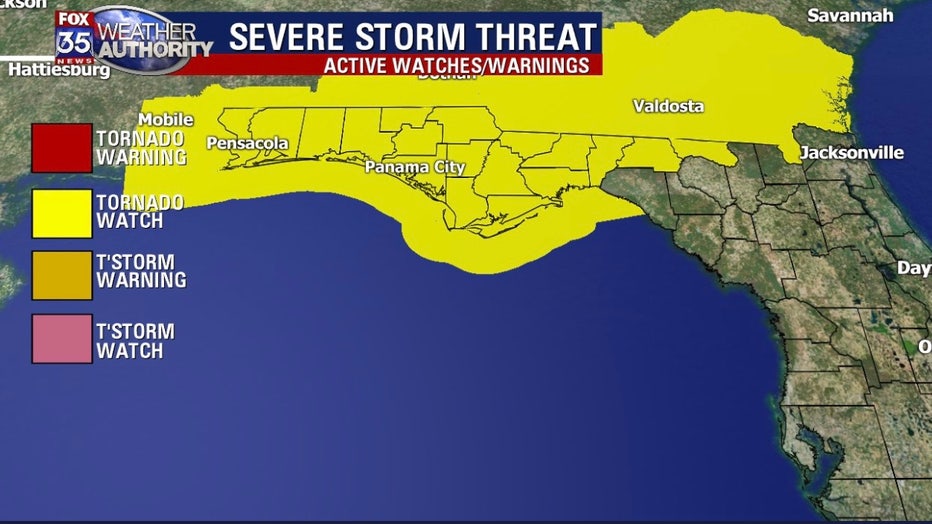Damaging Winds And Fast-Moving Storms: What To Watch For

Table of Contents
Identifying Potential Threats: Recognizing the Signs of Damaging Winds and Fast-Moving Storms
Understanding the signs of approaching damaging winds and fast-moving storms is the first step in protecting yourself and your property. This involves recognizing wind speeds, observing storm characteristics, and diligently monitoring weather forecasts.
Understanding Wind Speed and Damage
The Beaufort wind scale provides a valuable framework for understanding wind speed and its potential for damage. Gale-force winds, for example, can easily uproot trees and cause significant damage to structures. Hurricane-force winds represent an extreme danger, capable of causing catastrophic destruction.
- 20-38 mph (Beaufort scale 6-7): Gale-force winds: Trees begin to sway violently; unsecured objects become airborne; some structural damage to buildings is possible.
- 39-72 mph (Beaufort scale 8-11): Storm-force winds: Extensive tree damage; widespread structural damage to buildings; power lines are downed; flying debris becomes a major hazard.
- 73 mph and above (Beaufort scale 12 and above): Hurricane-force winds: Catastrophic damage to buildings; widespread destruction of trees and power lines; significant risk of injury and death. High winds of this magnitude necessitate immediate evacuation.
These high winds, coupled with severe weather warnings, should trigger immediate action.
Recognizing Storm Characteristics
Visual cues can often indicate the approach of fast-moving storms. Learning to recognize these characteristics is essential for timely preparation.
- Dark, ominous clouds: A sudden darkening of the sky, particularly with unusually dark or intensely colored clouds, can signify an approaching severe thunderstorm or other severe weather event.
- Rapidly changing weather patterns: A quick shift from sunny skies to dark clouds, accompanied by a sudden drop in temperature or a significant increase in wind speed, should raise your awareness.
- Rapidly rotating clouds: The presence of a rotating cloud formation, often a sign of a mesocyclone, indicates the potential development of a tornado.
- Unusual cloud formations: Mammatus clouds (bag-like pouches hanging from the underside of a cloud) and shelf clouds (low, horizontal clouds that extend from the base of a thunderstorm) can be indicators of severe weather.
Severe thunderstorms and weather fronts are often accompanied by these dramatic visual changes.
Utilizing Weather Forecasts and Warnings
Reliable weather information is your best defense. Regularly monitor weather reports, alerts, and warnings issued by your national meteorological service (like the National Weather Service in the US).
- Weather apps: Download reputable weather apps on your smartphone for real-time updates and alerts.
- Radio and TV: Tune into local news channels for weather updates and warnings. These are crucial sources of information, particularly during power outages.
- Understanding warning levels: A "watch" means conditions are favorable for severe weather to develop; a "warning" means severe weather is imminent or already occurring.
Pay close attention to weather radar to track the movement of storms and anticipate their arrival.
Understanding the Dangers: Assessing the Risks Associated with Damaging Winds and Fast-Moving Storms
Damaging winds and fast-moving storms present a variety of dangers, both direct and indirect, impacting property and personal safety.
Direct Impact of High Winds
High winds themselves pose significant risks. The sheer force of gale-force winds or hurricane-force winds can cause immense destruction.
- Flying debris: Loose objects such as signs, debris, and even building materials can become dangerous projectiles in high winds.
- Structural damage: Buildings can suffer significant damage, ranging from broken windows to complete roof collapse.
- Power outages: Downed power lines are a common consequence, creating further hazards and disrupting essential services.
Wind damage is a primary concern during these events, causing property damage and personal injury.
Secondary Hazards
The destructive power of damaging winds and fast-moving storms often leads to secondary hazards that can be just as dangerous.
- Flooding: Intense rainfall associated with storms can overwhelm drainage systems, causing flash floods.
- Landslides: Heavy rainfall can saturate the ground, making slopes unstable and increasing the risk of landslides.
- Wildfires: Downed power lines can ignite dry vegetation, increasing the risk of wildfires.
Understanding these secondary effects of storms is crucial for comprehensive preparation.
Health Risks
Severe weather events can pose significant health risks.
- Hypothermia: Exposure to cold temperatures during and after a storm can lead to hypothermia.
- Injuries from debris: Flying debris is a major source of injuries during damaging winds and fast-moving storms.
Staying indoors during severe weather, and having a well-stocked first-aid kit, are critical for minimizing health risks. Storm injuries are sadly common, so preparedness is essential.
Taking Proactive Steps: Preparing for and Mitigating the Impacts of Damaging Winds and Fast-Moving Storms
Preparation is key to minimizing the risks associated with damaging winds and fast-moving storms. Proactive measures can significantly reduce the impact on your safety and property.
Preparing Your Home
Securing your home against high winds is essential. Take these steps well in advance:
- Secure loose objects: Bring all outdoor furniture, decorations, and anything else that could become airborne inside.
- Trim trees: Trim branches that are close to your home or power lines to reduce the risk of damage.
- Reinforce windows and doors: Consider using storm shutters or applying additional reinforcement to prevent damage.
- Prepare an emergency kit: Stock an emergency kit with essential supplies like water, non-perishable food, a first-aid kit, flashlights, batteries, and a portable radio.
Home safety is paramount during these severe weather events.
Creating an Emergency Plan
Develop a comprehensive emergency plan to ensure the safety of your family or household.
- Family meeting: Hold a family meeting to discuss potential scenarios and establish clear communication protocols.
- Escape routes: Identify multiple escape routes from your home in case of emergency.
- Meeting point: Establish a designated meeting point outside your home in case you become separated.
- Emergency contacts: Make a list of emergency contacts including family, friends, and local authorities.
An effective emergency preparedness plan is your best safeguard against the chaos caused by a storm.
Staying Safe During a Storm
During a storm, your primary focus should be on staying safe.
- Stay indoors: Seek shelter in a sturdy interior room, away from windows and exterior walls.
- Monitor weather updates: Stay informed about the storm's progress through radio, TV, or weather apps.
- Avoid hazardous areas: Stay away from windows, doors, and areas prone to flooding.
Storm safety should be your top priority throughout the duration of the event.
Conclusion
Being prepared for damaging winds and fast-moving storms is crucial for protecting your safety and property. By understanding the potential threats, assessing the associated risks, and taking proactive steps, you can significantly mitigate the impact of these powerful weather events. Remember to always monitor weather forecasts, heed warnings from meteorological services, and follow safety guidelines to ensure your well-being during severe weather. Stay informed and prepared for damaging winds and fast-moving storms – your safety depends on it!

Featured Posts
-
 Analyzing The Success Of Dexter Resurrections Villain
May 21, 2025
Analyzing The Success Of Dexter Resurrections Villain
May 21, 2025 -
 Bbai Stock Market Reaction To Below Expectation Q1 Earnings
May 21, 2025
Bbai Stock Market Reaction To Below Expectation Q1 Earnings
May 21, 2025 -
 Antiques Roadshow Stolen Treasures Result In Criminal Charges
May 21, 2025
Antiques Roadshow Stolen Treasures Result In Criminal Charges
May 21, 2025 -
 Understanding The Increase In D Wave Quantum Qbts Stock Price On Friday
May 21, 2025
Understanding The Increase In D Wave Quantum Qbts Stock Price On Friday
May 21, 2025 -
 Pahalgam Terror Attack Switzerlands Condemnation And Call For Peace
May 21, 2025
Pahalgam Terror Attack Switzerlands Condemnation And Call For Peace
May 21, 2025
Latest Posts
-
 Cassis Blackcurrant Cultivation Harvesting And Production Methods
May 22, 2025
Cassis Blackcurrant Cultivation Harvesting And Production Methods
May 22, 2025 -
 Exploring The Richness Of Cassis Blackcurrant Liqueurs And Preserves
May 22, 2025
Exploring The Richness Of Cassis Blackcurrant Liqueurs And Preserves
May 22, 2025 -
 Adios A Las Enfermedades Cronicas El Poder De Los Superalimentos Para Un Envejecimiento Exitoso
May 22, 2025
Adios A Las Enfermedades Cronicas El Poder De Los Superalimentos Para Un Envejecimiento Exitoso
May 22, 2025 -
 The Allure Of Cassis Blackcurrant Flavor Profile Uses And Benefits
May 22, 2025
The Allure Of Cassis Blackcurrant Flavor Profile Uses And Benefits
May 22, 2025 -
 Superalimentos Cual Es El Mejor Para Prevenir Enfermedades Cronicas Este Podria Incluir El Arandano En La Descripcion
May 22, 2025
Superalimentos Cual Es El Mejor Para Prevenir Enfermedades Cronicas Este Podria Incluir El Arandano En La Descripcion
May 22, 2025
